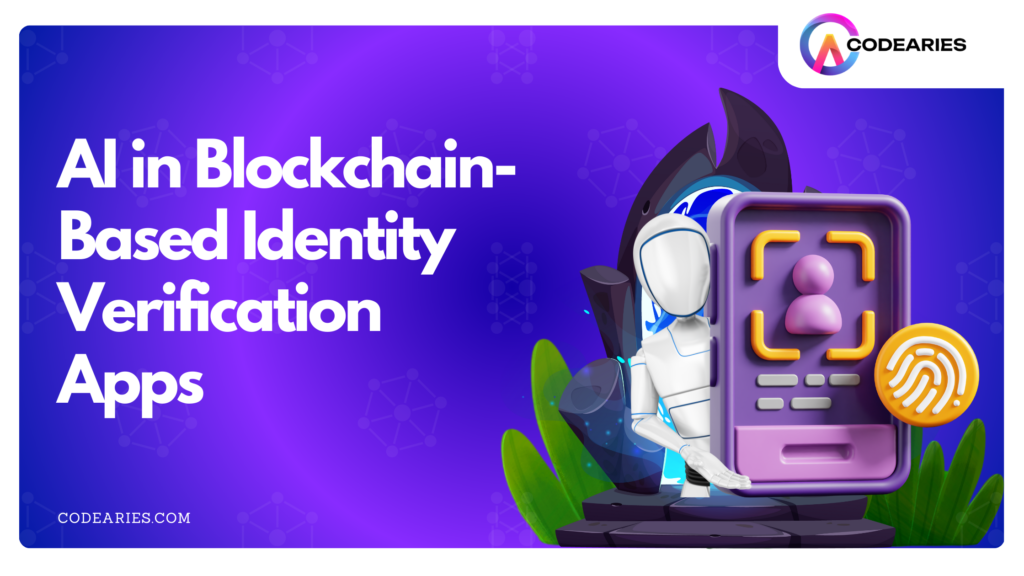AI and Blockchain: The Future of Identity Verification
Identity verification has come a long way from the days of physical documents like passports and ID cards. Traditional methods, while straightforward, were vulnerable to forgery, theft, and loss. As we move into the digital era, electronic methods using passwords, PINs, and security questions have become common. However, these methods also had their shortcomings, such as being susceptible to hacking and phishing attacks. Today, digital identity verification is essential for secure transactions and access to online services. However, the challenges associated with traditional methods have highlighted the need for more advanced and secure verification processes. With the rise of online services and increasing threats like identity theft and data breaches, there is a growing demand for robust identity verification systems. The integration of Artificial Intelligence (AI) with blockchain technology has emerged as a powerful solution, offering unparalleled security, privacy, and efficiency. This article explores how AI in blockchain-based identity verification apps is transforming digital identity management. Why Digital Identity Verification is Essential In the age of online banking, e-commerce, and social media, securely proving one’s identity is crucial. Digital identity verification has become a fundamental component of secure online interactions, playing a vital role across various sectors, including finance, government, healthcare, and social media. By ensuring that only authorized individuals access sensitive information and services, it helps prevent fraud, identity theft, and unauthorized transactions. Moreover, digital identity verification streamlines processes like customer onboarding and online transactions, enhancing efficiency and user experience. As our digital interactions increase, robust identity verification systems are essential for safeguarding personal data, enabling secure access to services, and providing personalized user experiences. Source The global identity verification market size was estimated at USD 9.87 billion in 2022 and is expected to grow at a compound annual growth rate (CAGR) of 16.7% from 2023 to 2030. The growing frequency of identity-related fraud and cybercrime has increased digitization initiatives. The increasing use case of data security across verticals propels the identity verification industry forward. Challenges in Traditional Identity Verification Traditional identity verification methods often fall short in addressing modern security threats. They typically rely on centralized systems, making them vulnerable to single points of failure and large-scale data breaches. Moreover, manual verification processes can be slow, error-prone, and costly. These challenges underscore the need for innovative solutions that can enhance security while streamlining the verification process. The Role of Blockchain in Identity Verification Blockchain technology addresses many of the limitations of traditional identity verification methods by leveraging a decentralized, distributed ledger that ensures transparency, security, and immutability. This makes blockchain an excellent choice for managing and verifying digital identities. Key Advantages of Blockchain in Identity Verification Decentralization By eliminating central points of failure, blockchain reduces the risk of data breaches and unauthorized access. Immutability: Data recorded on a blockchain cannot be altered or erased, ensuring the integrity and authenticity of identity records. Transparency: Blockchain provides a clear, auditable trail of all identity-related activities, enhancing accountability. Enhanced Security: The cryptographic nature of blockchain offers robust protection against hacking and identity fraud. Privacy Control: Individuals can manage and control their own identity data, deciding who has access to their information. Interoperability: Blockchain supports the seamless exchange of identity information across different platforms and organizations. Understanding AI’s Role in Identity Verification AI brings a new dimension to identity verification by automating complex processes and enhancing security measures. AI algorithms can quickly analyze vast amounts of data, identifying patterns and anomalies that may indicate fraudulent activity. Machine learning models improve over time, making AI an invaluable tool for real-time identity verification and fraud detection. Here are key ways AI is transforming identity verification: Automated Data Analysis AI can swiftly analyze vast amounts of data to detect patterns, spot anomalies, and identify potential fraudulent activities with high precision. Enhanced Biometric Verification AI-driven algorithms improve the accuracy of biometric verification methods, including facial recognition, fingerprint scanning, and iris recognition, making these processes more reliable. Real-Time Fraud Detection By continuously monitoring user behavior and transaction data, AI can detect and respond to fraudulent activities as they happen, offering real-time protection. Natural Language Processing (NLP) AI leverages NLP to accurately extract and verify information from identity documents, such as passports and driver’s licenses, streamlining the verification process. Machine Learning AI systems can learn from previous data, improving their accuracy and effectiveness over time, which enhances the reliability of identity verification methods. Improved User Experience AI personalizes the identity verification process, making it more intuitive and user-friendly, thus reducing friction for users. Integration with Blockchain Combining AI with blockchain technology can create highly secure and efficient identity verification systems, offering a powerful synergy that enhances overall security and data integrity. By integrating AI into identity verification, organizations can achieve greater automation, heightened accuracy, and better security, ultimately minimizing fraud and enhancing user trust. AI and Blockchain Integration for Identity Verification The integration of AI and blockchain technology creates a powerful synergy for identity verification. AI enhances the efficiency and effectiveness of blockchain-based systems by automating data analysis and decision-making processes. In turn, blockchain provides a secure and transparent platform for storing and managing identity data. Together, these technologies offer enhanced security, privacy, and reliability for identity verification systems. Key Benefits Strengthened Security: AI provides real-time fraud detection, while blockchain maintains data integrity through its tamper-proof ledger. Greater Efficiency: Automating identity verification processes with AI reduces manual intervention, speeding up verification and conserving resources. Enhanced Privacy Control: Blockchain’s decentralized architecture allows individuals more control over their personal data, minimizing unauthorized access. Scalability: Both AI and blockchain are capable of handling vast amounts of data and a large number of users, making them ideal for scalable identity solutions. Seamless Interoperability: Blockchain can act as a universal platform for sharing verified identity information across different systems and organizations. Specific Use Cases Decentralized Identity Management (DID) AI can automate and enhance the verification processes within DID systems, improving both security and efficiency while detecting fraudulent activities. Supply Chain Verification AI can analyze data stored on blockchain networks to ensure product authenticity and track provenance,







